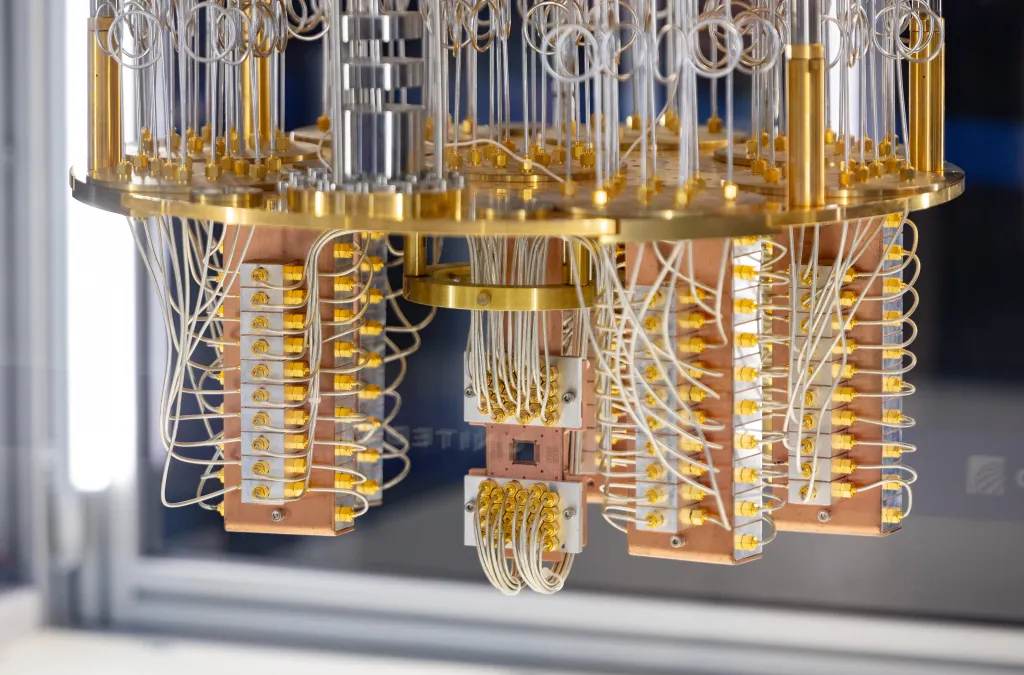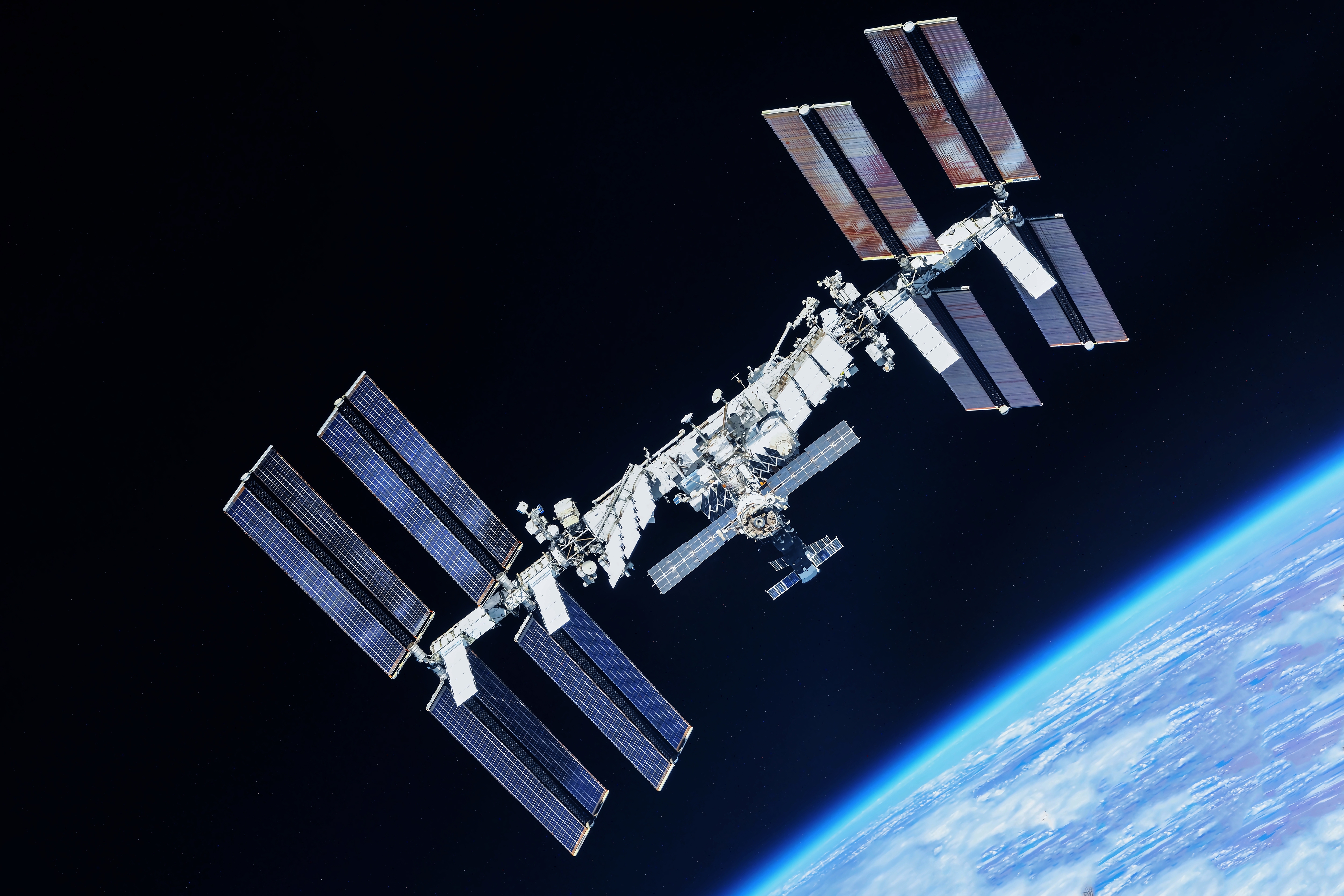
Chicago has quickly emerged as a hub for quantum computing, with the state of Illinois and technology companies pouring millions of dollars into developing a campus to build the worldŌĆÖs first commercially viable quantum computer on the cityŌĆÖs Southeast Side.
But what does a quantum computer even look like? And how do they work?
Those are questions that a new exhibit unveiled at ChicagoŌĆÖs OŌĆÖHare International Airport seeks to answer. In Terminal 1, near the massive model of a dinosaur skeleton Thursday morning, travelers of all ages paused on their brisk walks through the concourse to look at the model of the inside of a quantum computer, which resembles a large golden chandelier with four ŌĆ£tiersŌĆØ, copper wiring and a chip at the bottom. On a screen on one side of the fiberglass case protecting the quantum computer, travelers were able to watch a video explaining the science behind it.
The exhibit, which will remain up for at least one year, is organized by members of the STAGE Center at the University of ChicagoŌĆÖs Pritzker School of Molecular Engineering and IBM to help the public learn about quantum computing, at a time when Chicago has emerged as a hub for quantum computing research and development.
Nancy Kawalek, director of the STAGE Center, said the purpose of the exhibit is to demystify quantum computing to people who may not be familiar with it.
ŌĆ£I donŌĆÖt want people to get sort of frightened off by it, not understanding it,ŌĆØ Kawalek said, ŌĆ£when you learn about quantum it sounds like magic ŌĆ” but itŌĆÖs not magic. It really works, and itŌĆÖs been proven scientifically.ŌĆØ
Kawalek was referring to the fact that until recently, quantum computing, based on a type of physics called quantum mechanics, was viewed as only a theoretical possibility. However, that is changing as quantum computers, such as the one developed by IBM and displayed at the airport, have moved out of labs and into traditional data centers.
Avery Linder, a former University of Chicago student who worked on the exhibit used the example of flipping a coin to explain how quantum computers are different from supercomputers and other traditional computers.
ŌĆ£With quantum itŌĆÖs like if you were to flip a coin and it was midair, you could probably not tell me if it was heads or tails ŌĆ” itŌĆÖs in two states of existence at once,ŌĆØ Linder said.
She explained that quantum computers are able to capture this idea of things being in two states at a time and they can rearrange information in exponentially more ways than traditional computers, which only record data as zeroes or ones and have a finite amount of ways of arranging and reporting information.
In the future, it is expected that this ability of quantum computers to handle complexity could be harnessed to detect disease in a single cell and diagnose the appropriate drug accordingly, or protect financial information from even the stealthiest hackers.
Linder, who graduated from the U. of C. with a bachelorŌĆÖs degree in May, now works full time on STAC12, a start-up she co-founded that grows diamonds for quantum computing devices. She is one of five students associated with the STAGE Center who created the website, located at flyquantum.stage.uchicago.edu, that accompanies the exhibit. She said she hopes the exhibit makes quantum computing accessible to everyone, even those who didnŌĆÖt take several semesters worth of math and physics courses like she did.
ŌĆ£It seems like this thing where you canŌĆÖt possibly understand it until you go through all those classes,ŌĆØ Linder said, ŌĆ£But itŌĆÖs actually very accessible ŌĆ” if itŌĆÖs explained the right way. That was the point of the website, for us.ŌĆØ
Hanhee Paik, director of quantum algorithms centers at IBM, helped design the quantum computer displayed at the airport that was debuted by IBM in 2017. She explained that the inside of the quantum computer has a tiered, chandelier-like design because the device is akin to a large refrigerator that uses copper wiring to cool every level and make sure the chip at the bottom is not affected by any ŌĆ£thermal noiseŌĆØ that can affect its ability to process data.
ŌĆ£Our quantum processors are ŌĆ” three times colder than outer space to help remove any noise that could interfere with the computation,ŌĆØ Paik said.
The exhibit is hosted in OŌĆÖHareŌĆÖs Terminal 1 by United Airlines and was partially funded by the American Physical Society, the scientific membership organization committed to advancing physics. APS funded several projects related to quantum computing recently, because 2025 was designated as the International Year of Quantum Science and Technology by the United Nations. Kathryn Walters-Conte, head of program strategy and operations for the society, who attended the unveiling of the exhibit minutes after she stepped off her morning flight from Washington, D.C., said that she hopes the display will inspire people to study quantum computing.
ŌĆ£I think people hear about quantum in pop culture and science fiction and are not sure if itŌĆÖs a real thing,ŌĆØ Walters-Conte said, ŌĆ£but this exhibit is to get people interested in it so they can see that this is a real physical thing and this is the equipment that physicists use.ŌĆØ



